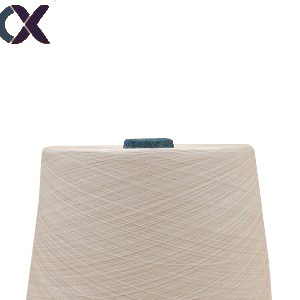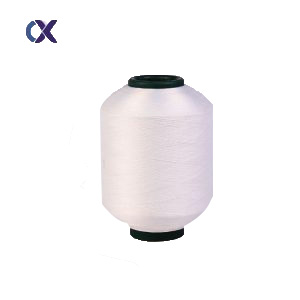PVA (Polyvinyl Alcohol) yarn has emerged as a groundbreaking material in the realm of technical textiles, celebrated for its unique combination of water solubility, strength, and adaptability. Derived from synthetic polymers, PVA yarn stands out for its ability to dissolve in water under specific conditions, making it invaluable in specialized applications ranging from medical sutures to industrial composites. This remarkable versatility has positioned PVA yarn at the intersection of innovation and functionality, revolutionizing how industries approach material design.
The creation of PVA yarn begins with the polymerization of vinyl acetate to form polyvinyl acetate, which is then saponified to produce polyvinyl alcohol. This synthetic polymer is melted and extruded through spinnerets to form fine filaments, which are subsequently spun into yarn. The magic of PVA lies in its solubility: while insoluble in cold water, it dissolves in water at temperatures above 60°C, depending on its degree of polymerization and saponification. This temperature-dependent solubility makes PVA yarn a dynamic tool in various manufacturing processes.
In the textile industry, PVA yarn serves as a temporary support structure in complex weaving and knitting patterns. Known as a “soluble carrier,” it is used alongside other fibers to create intricate lace, delicate mesh fabrics, or highly structured textiles. Once the fabric is completed, the PVA component is dissolved in warm water, leaving behind the desired texture or pattern. This technique is particularly useful for creating seamless, lightweight fabrics that would be impossible to produce with traditional methods, such as fine netting for lingerie or elaborate wedding veils.
Medical applications highlight PVA yarn’s unique properties. As a dissolvable material, it is used in absorbable sutures that eliminate the need for removal, dissolving naturally as the wound heals. PVA’s biocompatibility and low toxicity make it ideal for such applications, reducing patient discomfort and the risk of infection. Additionally, PVA yarn is explored in surgical meshes and drug-delivery systems, where its controlled dissolution can release medication gradually or provide temporary structural support for tissue regeneration.
In industrial composites, PVA yarn acts as a reinforcing agent in cement and concrete. When mixed into the composite, the yarn dissolves in the presence of water, creating micro-channels that improve the material’s flexibility and impact resistance. This innovation has led to the development of high-performance construction materials that are more durable and crack-resistant, essential for earthquake-prone regions or infrastructure subjected to heavy loads. PVA-reinforced composites also reduce the need for traditional steel reinforcement, lowering costs and environmental impact.
Environmental applications leverage PVA yarn’s solubility for sustainable solutions. Dissolvable PVA yarn is used in erosion control blankets, where it holds soil in place until vegetation establishes, then dissolves harmlessly. Similarly, it is incorporated into agricultural seed tapes, ensuring precise seed spacing and providing temporary moisture retention until the seeds germinate. These applications minimize plastic waste and promote eco-friendly practices in landscaping and farming.
The versatility of PVA yarn extends to the fashion and craft industries. Designers use it to create temporary structures for 3D-printed garments, dissolving the PVA support after shaping the fabric. Crafters employ PVA yarn in water-soluble stabilizers for embroidery, providing a firm base that washes away, leaving intricate stitch work intact. Its ability to hold shape before dissolving makes it a favorite for creating detailed appliqués or temporary fabric sculptures.
Performance-wise, PVA yarn offers impressive strength and abrasion resistance when dry, making it suitable for heavy-duty applications like industrial ropes and nets. Its resistance to oils, greases, and many chemicals further enhances its utility in harsh environments. However, PVA’s solubility requires careful storage to prevent accidental exposure to moisture, especially in humid climates. Manufacturers often package PVA yarn in moisture-resistant materials to maintain its integrity until use.
Innovations in PVA yarn technology focus on expanding its solubility range and mechanical properties. Researchers are developing PVA blends that dissolve at lower temperatures or in specific pH environments, tailoring the yarn for niche applications like targeted drug delivery or smart textiles. Bio-based PVA alternatives, derived from renewable resources, are also being explored to reduce the material’s carbon footprint, aligning with global sustainability goals.
While PVA yarn offers remarkable advantages, its application requires precise control over environmental conditions. In manufacturing, ensuring consistent water temperature and exposure time is critical for complete dissolution without damaging other materials. In medical use, timing the dissolution rate to match the healing process demands meticulous formulation. These challenges drive ongoing research to refine PVA yarn’s properties and expand its practical applications.
The future of PVA yarn looks promising, with advancements in nanotechnology and material science opening new frontiers. Imagine dissolvable PVA yarns embedded with sensors that monitor structural integrity in buildings, dissolving to release data when activated. Or smart fabrics that change texture as PVA components dissolve in response to body heat, adapting to the wearer’s comfort. Such innovations could redefine industries from construction to healthcare, proving PVA yarn’s potential as a truly transformative material.
In essence, PVA yarn represents the epitome of functional innovation in textiles. Its ability to dissolve on demand while offering robust performance in diverse applications makes it a cornerstone of modern manufacturing. From healing wounds to strengthening buildings, from enabling artistic creations to protecting the environment, PVA yarn continues to break boundaries, demonstrating that sometimes the most powerful materials are those designed to disappear when their work is done. As technology evolves, PVA yarn will undoubtedly play an even more significant role in shaping sustainable, intelligent, and adaptable solutions across countless industries.

 Wool yarn
Wool yarn Viscose yarn
Viscose yarn Spandex Yarn
Spandex Yarn